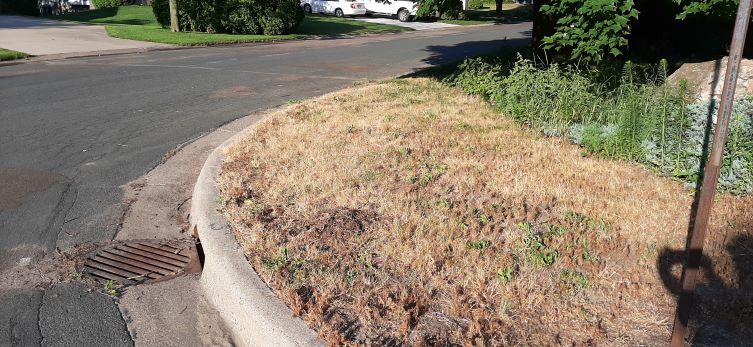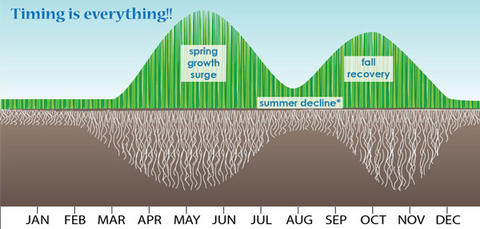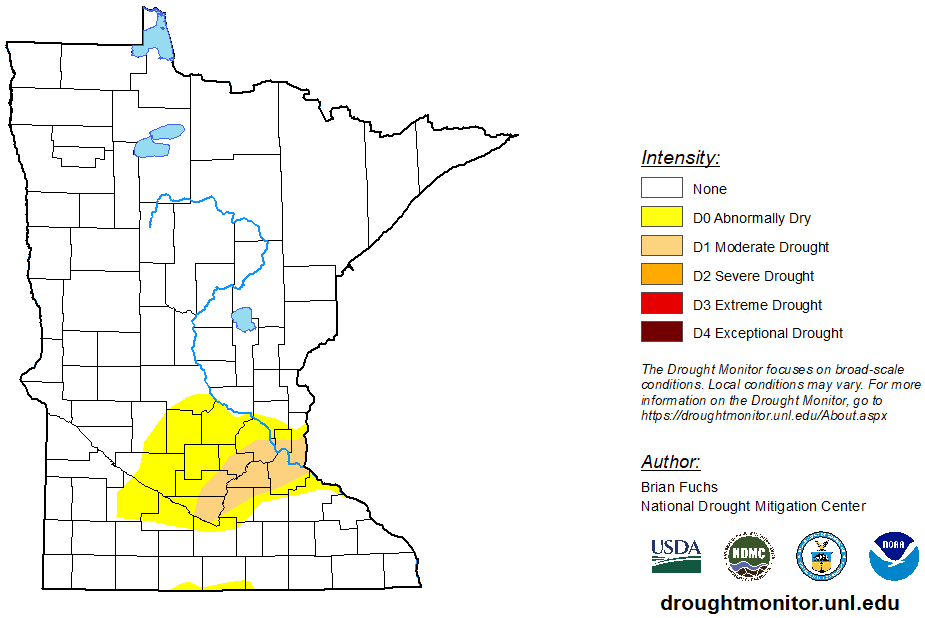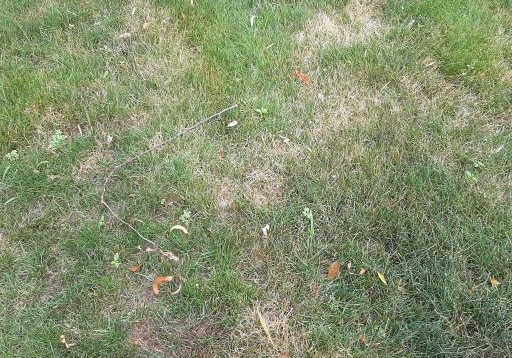Welcome to the latest issue of the Home Lawn Care Newsletter from UMN Turfgrass Science! We will provide monthly updates to address all your lawn care tasks at the times when you need to know.
July 18, 2022: Issue 3
Why is my lawn brown?
Just how brown is your lawn? Is it uniformly brown, or are there brown patches mixed in with the green? Uniformly brown is typically drought, while patches can mean other things.
Drought, dormancy and heat stress
Dormancy. In summer, dormancy for cool-season turfgrasses means the lawn is not actively growing due to hot, dry conditions. If your lawn is otherwise healthy, you can wait dormancy out. Soil temperatures are rising to over 80 degrees, which means grass roots and shoots naturally are slowing their growth. When there is less soil moisture, either due to lack of rain or if you stop watering, turfgrass plants rest and reserve energy until they revive in the fall and take up nutrients for overwintering.
Drought. As of July 12, 2022, most of the metro area has abnormally dry conditions and the southern Twin Cities southwest to Mankato are in moderate drought conditions.
If drought continues during dormancy, water fine fescue lawns ½” every 30 days. Bluegrass lawns can tolerate up to 60 days without water. Start regular watering practices in late summer to get your lawn actively growing before you start fall lawn maintenance.
Heat stress. Turfgrasses, especially fine fescues, are susceptible to stress during the heat. Ideally, you've left the grass at least 4 inches tall going into dormancy. Don't mow and avoid a lot of foot and equipment traffic on the lawn to preserve the crowns of the grass plants, from which growth occurs.
Other causes of brown spots
- Dog urine may have caused brown spots.
- Grubs, such as from Japanese beetles, may have caused brown spots from feeding on grass roots. In August, you can check for grubs and determine if treatment is needed.
- Turfgrass diseases can make brown, often sunken, areas in your lawn. Most diseases in Minnesota resolve themselves as the weather cools and humidity lowers so there is typically no need to treat. If you have a serious issue with your lawn, you can send samples to the University of Wisconsin for testing.
- Turfgrass disease identification from Purdue Extension
- Lawn disease testing from University of Wisconsin
Trending topics
Fall is the best time for lawn maintenance, so prepare to repair!
- Get a soil test done - find out what nutrients or amendments your lawn needs
- Reserve equipment - if you're considering aerating or dethatching, reserve your equipment now for late August or early September.
- Identify weeds that you will need to control and what kind of seed best suits your lawn type. Order seed for fall.
Events
The UMN Turfgrass Science team will be at:
- The Sunday Market at Dancing Bear Chocolate in Minneapolis from 9am to 2pm on Sunday, August 7 and Sunday, August 21.
- The Dakota County Fair in Farmington on Wednesday, August 10 from 10am to 7pm.
We will be at these events to answer questions on smart irrigation and lawn care as part of our collaboration with the Metropolitan Council.
- UMN Turfgrass Science Golf Field Day on Thursday, August 11, 2022 from 1:00 to 3:00pm on St. Paul campus. If you have an interest in research relating to golf course turf management, join us!
Research Highlights
After devoting hard work keeping your lawn nice, have you ever wondered if artificial turf might be better? The UMN Turfgrass Science research program has been investigating the use of artificial turf. In this month’s research focus, read about work from Dr. Michael Barnes.
- Putting the horse before the cart: The adoption of artificial turfgrass in cities
- We asked real people about fake grass



